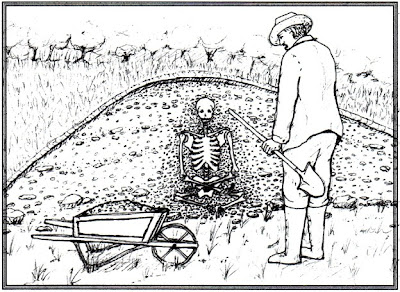
Any discussion of the people who lived in the Fingerlakes before the American settlers took possesion of the land must include Bare Hill and Vine Valley. Bare Hill and near by Vine Valley were very early and important centers of occupation. For as much as a thousand years a culture that preceded the Seneca lived in this unique spot that offers a sheltered shallow bay, a stream that fish migrated in and out of, and a hill top with a majestic view of the surrounding area. This culture is known by many names, Arthur C. Parker, of the Rochester Museum, renown archeologist of Seneca decent named them the Middlesex culture. This ancient culture was closely tied too the mound building cultures. Specifically the Adena and Hopewell cultures. Another name given is the Algonquin people.
Unlike the Seneca these earlier people created sophisticated art and had extensive trade with other tribes. These people had copper artifact which indicate trade with the people that live around lake Michigan where native copper is found. The Seneca did not use copper, in fact they resented it as a material of their defeated enemies.


